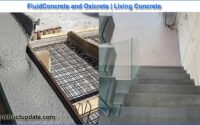What is Shoring and its types in Construction
What is Shoring?
Shoring is the construction of a temporary structure to sustain an unstable structure. These act as lateral supports for walls. Shoring can be employed when walls bulge out when walls fracture due to unequal foundation settlement and repairs are required, when an adjacent structure needs to be demolished, or when apertures in a wall need to be constructed or enlarged.
What Is the Use of Shoring?
Understanding shoring and its types is crucial.
Shoring is used in different situations as follows,
1. Shoring is utilized to support building stability when a risky scenario arises as a result of unequal settling at the Caisson foundation.
2. Shoring is used during the demolition of the side building to stabilize the existing structure.
3. Structure stability is jeopardized due to poor workmanship and outdated structure.
4. The structure is unsafe because of ongoing repairs to the old structure.
5. Shoring is also utilized to sustain the structure during upgrades such as wall demolition and perforation.
Types of Shoring Systems
There are several types of shoring systems available for construction projects. The most effective method is determined by soil conditions, excavation depth, and project duration.
- Raking Shoring
- Dead Shoring
- Flying Shoring
- Timber Shoring
- Steel Shoring
- Concrete Shoring
- Anchored Shoring
- Raking Shoring

Racking Shoring
What is racking shoring?
Raking shoring in construction is a mechanism for providing temporary support to an unstable wall. Raking coastlines, also known as inclined shores, are constructed differently depending on the site characteristics. Its size is secured to the unsafe wall with hooks. The wall plate is further fastened with needles. The needles, which are 10 cm. x 76 cm. in section, penetrate within the wall for approximately 10 cm. In turn, the needles are stiffened with wooden cleats. The top end of the slanted rakers rests against the needles. The rakers are supported at the base by a single-piece platform set in an inclined position in the ground. Cleats and dogs hold the rakers to the sole piece.
Dead Shoring
What is Dead Shoring?
In construction, dead shoring, sometimes known as deadman shoring, refers to a huge object buried horizontally in the ground, such as a beam, lumber, or concrete block. It is positioned at a specific depth behind the retaining structure, and the load is passed to it to keep the wall or trench from collapsing. This shoring type is typically utilized in circumstances where space is restricted and traditional shoring methods are not feasible.
Flying Shoring
What is Flying Shoring
Flying Shoring is also known as Horizontal Shoring. Shoring can be defined as a horizontal shore between two structures that provide temporary support to one or both of them. This shoring type is typically utilized when there is a small gap between two walls.
Timber Shoring
What is Timber Shoring?
Timber shoring uses wooden beams and planks to stabilize excavations. It is most suitable for shallow excavations on stable soil. Timber shoring is affordable and widely accessible, but it requires frequent inspections and changes because the wood can distort or weaken over time. It is a simple and dependable solution for providing temporary support in a variety of building circumstances.
Steel Shoring
What is Steel Shoring?
Steel shoring is a type of excavation support that uses interlocking steel beams and posts. It can withstand deeper excavations and higher loads than timber shoring. Steel shoring is a stable, long-lasting solution, but it requires specialist equipment to install and remove, and the materials are expensive.
Strong steel beams and panels are deliberately positioned to resist soil pressure, ensuring a safe and secure construction site.
Concrete Shoring
What is Concrete Shoring
The concrete shoring type, commonly known as caissons, makes use of reinforced concrete walls and slabs. It is appropriate for deep excavations or ones that will be in situ indefinitely. Concrete shoring can withstand massive loads and last indefinitely. However, constructing and implementing this form of shoring needs a significant amount of time, effort, and resources. Pre-engineered and reusable components enable faster installation and removal, reducing downtime and increasing production.
Anchored Shoring
What is Anchor Shoring?
Anchored shoring stabilizes excavations by anchoring steel beams to the ground outside the excavation. Anchors are set at an angle into stable soil outside the excavation’s boundaries. Anchored shoring is a cost-effective choice for deep excavations, but it requires extremely stable soil conditions and precise anchor installation.
The use of anchors, structural pieces designed to resist pressures tugging on the structure, is a critical component of anchor shoring. These anchors are placed in the ground and attached to the structure being supported.
Trench Shoring
What is trench shoring?
Trench shoring, also known as trench sheeting, is used to excavate narrow trenches for laying pipelines, cables, or foundations. To prevent the walls from caving in, steel or aluminum sheets are erected along the trench’s sides. The sheets can be inserted while the trench is being dug or placed in a previously dug trench. Trench shoring is a versatile and cost-effective solution for many applications.
Wall Shoring
What is wall or pile Shoring?
Wall shoring, also known as soldier piling and lagging, is used when digging vast open areas or to reinforce existing shaky walls. It entails embedding steel beams known as soldier piles in the ground and connecting the piles with horizontal boards known as lagging. The lagging serves as a retaining wall, supporting the earth. This style of shoring takes more substantial materials and equipment to install, but it can withstand significantly larger loads than trench shoring. It is useful for deep excavations and propping up surrounding structures.




